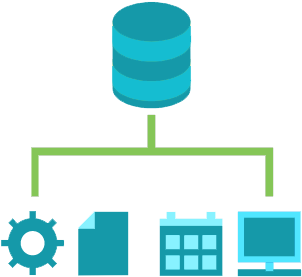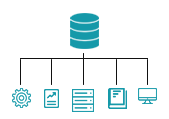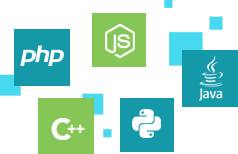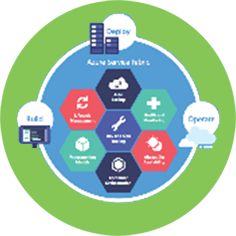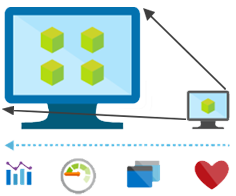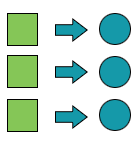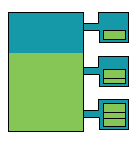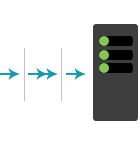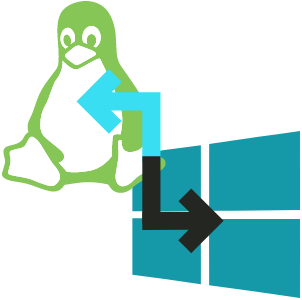February 13, 2022
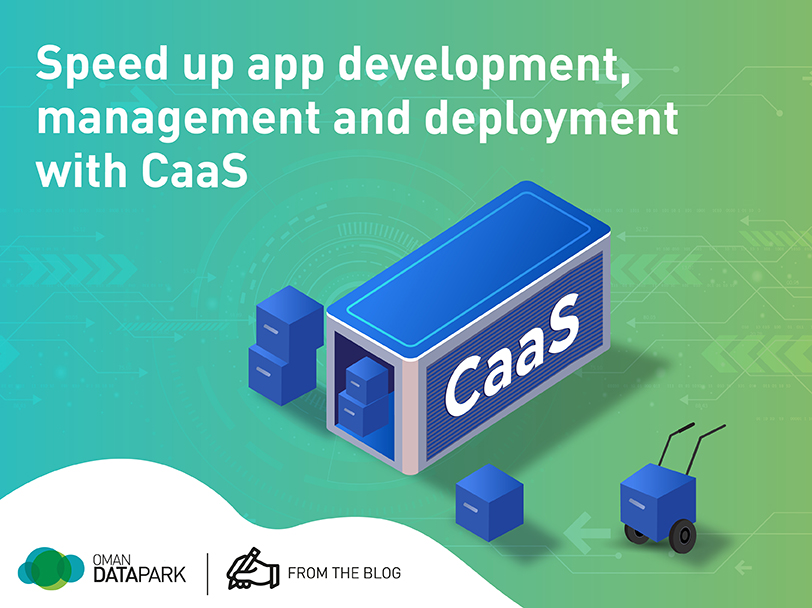
Everything you need to know about CaaS and why is it being preferred by developers.
IT developers across the world stay under constant pressure to improve agility and deliver new applications faster than before. A particular area of such pressure is to be able to frequently deploy new or enhanced application code while accelerating the process of digital transformation. Great opportunities come with a lot of challenges. Challenges like infrastructure issues or how much time it takes for the DevOps team to manage things in real-time or how long it takes to build a test system that needs density and the ability to seamlessly move workloads between virtual machines. This is where Containers and Containers As A Service can be used to tackle these challenges.
CaaS, stands for Containers As A Service, and it has been growing in popularity due to the rise in container technology, micro-services based architecture, and cloud computing. * *Gartner predicts that by 2022, more than 75% of global organizations will be running containerized applications in production, up from less than 30% today.
Let us explore what CaaS can do for you and the benefits of using them.
What are Containers?
Before we dive deeper into CaaS, it is important to first understand what are Containers. In simple words, containers can be described as independent units of software that package all the necessary components of an application and its dependencies like the binary code, libraries etc. inside itself.
As a matter of fact, a single container can be used to run anything, whether it is a small micro-service or a large application. Moreover, it can run anywhere in isolation, whether it is on a desktop, on a traditional operating system, or in the cloud. Since containers are isolated units – they can be deployed much faster as compared to virtual machines. Another point of differentiation is that containers do not contain operating system images which makes them more lightweight and portable, and therefore can be easily shifted between different platforms and cloud vendors.
Why are Containers important?
Over the years, the usage of containers has seen a significant increase as they play a crucial role in the evolution of cloud computing. Containerization helps IT developers to release and deploy the applications way faster. Even when there is a requirement to run a large application, multiple containers can be deployed as one or more containers together as clusters. Such clusters need a container orchestrator to run, such as Kubernetes.
Earlier, when the developers transferred code to a new location through a traditional method, they used to experience bugs and errors. However, with the introduction of containerization, most of such issues are eliminated. How? It is because a package of software or in other words a container is isolated from the host operating system.
If we talk about small and medium businesses, containers not only help turn around the application life-cycle management but also conform to the principles of open source. Therefore, containers have become a game changer for many organizations as they get freedom from vendor lock-in.
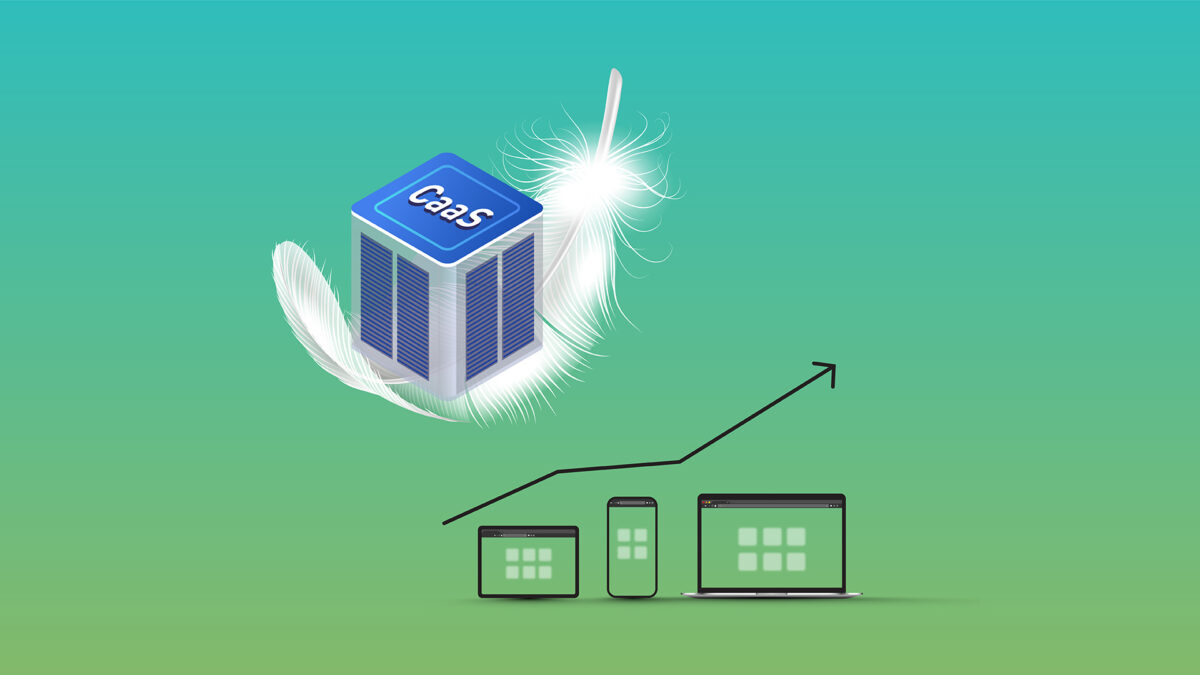
Advantages of using Containers
Containers are an efficient way to build, test, deploy, and redeploy applications in multiple environments. Let’s understand what are some of the plus points of using containers:
- Increased portability
Using CaaS, even large applications can be deployed on multiple OS and platforms with ease. - Standardized results
Applications deployed at various places will run the same, no matter where they are deployed. In case of failure of one Container, the others do not get impacted. - Less overhead
As compared to traditional or hardware virtual machine environments, containers use lesser resources. - Rapid deployment
Containers enable increased agility and speed with automated deployment and scaling of modern applications. - Better application development
Containers are proved to be a support system for developers’ efforts in order to accelerate development, test, and production cycles.
What is CaaS all about?
CaaS refers to Containers As A Service that uses cloud technology to control containers. In today’s enterprise IT environment, CaaS plays a very important role as it enables developers to upload, develop, manage, ship and run the containers and applications anywhere. It also eliminates the need for virtual machines as it can perform functions like an operating system and does not depend on any external one.
CaaS does not recreate the work of hardware and software but it can simply rely on a self-contained delivery model. And that is how it lets applications complete tasks in the cloud. As self-contained services, organizations can deploy CaaS in any environment be it on-premises or in cloud environments. Perhaps, this is why, it is sometimes believed to be a special type of Infrastructure-as-a-service (IaaS) model for cloud service delivery. But CaaS runs on containers as its larger assets instead of virtual machines and any other physical hardware.
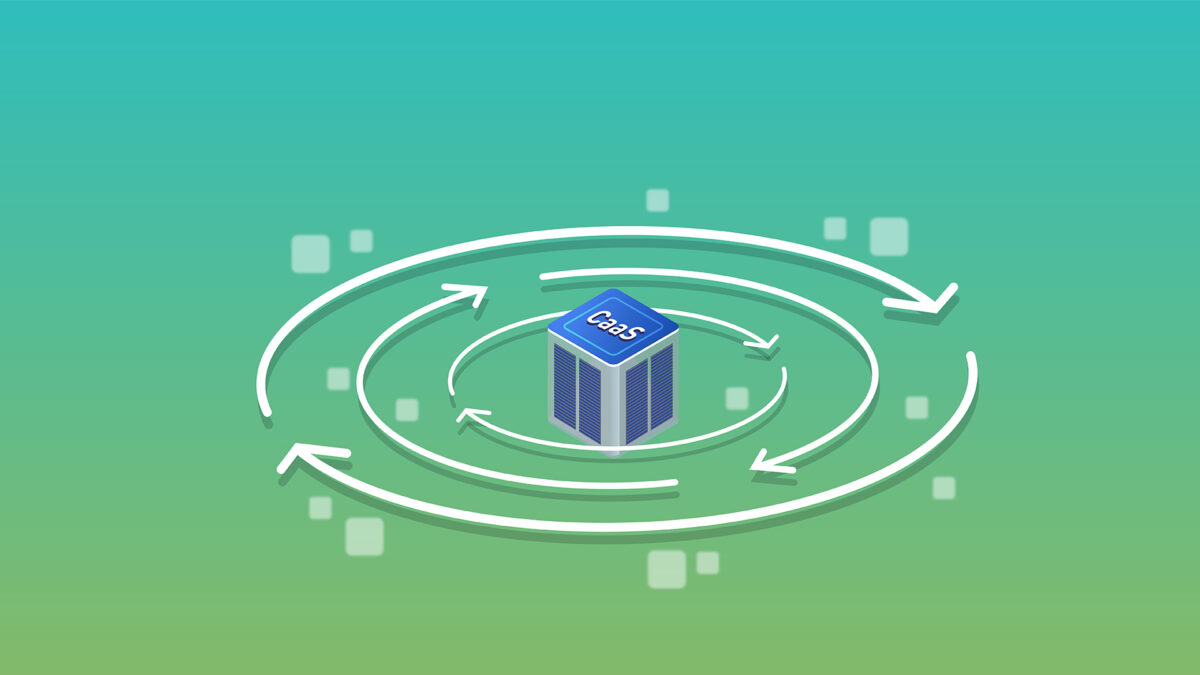
Advantages of CaaS
- The adoption of CaaS enables faster and lighter deployments since it eliminates the need for any underlying infrastructure.
- Organizations can go for complete horizontal scaling while the developers can add the containers as a cluster.
- Developers can use an assortment of containers to take care of different responsibilities within different coding environments.
- CaaS ensures defined and dedicated network protocol relationships between containers that can be deployed faster in cloud capture.
- Makes it much easier to design and deploy applications or build micro-services.
- Built-in automated measurement performance and orchestration management
- While using the specific amount of space and resources required for development, it leads to saving time and money.
- The more containers that developers use during horizontal scaling, the more money they save by avoiding the increased costs of virtual machines and similar technologies.
- The feature of isolated containers help maintain security protocols and prevent
- security concerns as they emerge.
- Eliminates the inconsistencies that arise due to relying on multiple applications or machines.
- Overall benefits of CaaS let you streamline the entire development process that can be deployed in a short time.
Usage of CaaS
- CaaS may not be the best option while using monolithic applications that include numerous features. Instead, they are apt when it comes to micro-services application architecture. Using CaaS, organizations can deploy large clusters at once or as per their strategic plan, depending on their efficiency to operate.
- Since CaaS is self-contained, it works well with today’s corporate model, where employees can work on their own devices and team members may need to run CaaS from remote locations to access the company’s network.
- Companies sometimes need to ‘lift and shift’ their existing applications into more modern environments. This is where Container As A Service delivers the benefits of the virtualization of operating systems.
- Refactoring is a more intensive process than lift-and-shift migration, but CaaS offers the full benefits of a container environment to develop new container-native applications
- By using a single container, multiple scattered applications and micro-services can be more easily managed as well as scaled.
- CaaS technology also supports continuous integration while developers build, test, and deploy applications across different environments.
- Organizations often need to deploy one or more similar processes that run in the background. For these extra software processes, Containers play a crucial role in deployment.
What is Container Orchestration?
Container orchestration deals with developing, handling and managing the lifecycles of containers, especially in large, dynamic environments. Running large-scale containers at once can get out of hand since they are lightweight in nature. More so when they are coupled with micro-services—which usually include hundreds or thousands of containers. Managing them manually can become significantly complex without using container orchestration. Container orchestration helps manage complex functions for development and operations. Furthermore, it helps automate most of the work and boost resilience. While it can automate containerized applications, it also ensures security by reducing the chance of human error. Software developer teams make use of container orchestration to control and automate many tasks:
- Provisioning and deployment of containers
- Redundancy and availability of containers
- Even distribution of application load while scaling up or removing containers
- Migration of containers from one host to another
- Allocation of resources between containers
- External exposure of services running in a container with the outside world
- Balancing load between containers
- Strength monitoring of containers and hosts
- Application configuration with the containers running it
Containers vs Virtual Machines (VMs)
One of the most common observations is that Containers are often mistaken with Virtual Machines (VMs). There may be some similarities between the two but they are not the same. The best way to distinguish the two is that containers are non-dependent on the base operating system. This allows developers and testers to focus their work on developing the code without dealing with the various issues caused due to different operating systems.
As far as Virtual Machines are concerned, it is mandatory for them to have their own guest operating system to run. It may involve a large number of system resources and overhead, especially when multiple VMs are running on the same server, each with its own guest OS. In contrast, different containers can share the same host OS and are much lighter in size, and can exist in megabytes. Therefore, a container might take just seconds to start whereas a typical Virtual Machine takes a few gigabytes and minutes to boot.
CaaS by Oman Data Park
At Oman Data Park, we believe Containers are the future of business micro-service software development. This is why, we offer a CaaS model with a 3 Tier Data Center along with excellent hardware, security, and experienced staff.
Our CaaS approach is designed to strengthen your team and meet your customers’ priorities without much effort. On one hand, you can reduce the development cycle time while on the other, you can exponentially cut out the cost of developing new services. To keep up with the fast pace, we ensure that the start-up time is a fraction of a second that is 60% faster than running any Virtual Machine. Additionally, our Network Operations Center constantly monitors asset performance to ensure your containers are always available when needed. And most importantly, we offer a host of easy payment plans with different tiers of performance to give you the flexibility to choose a plan according to your needs.
The Bottom Line
Today, thousands of apps are being developed and rolled out at a speed beyond imagination. Some of these apps have already become an integral part of our daily lives, from connecting with our friends and families to enabling business transactions, from online shopping to playing games or just simply networking. As per experts, it is only the tip of the iceberg. Further growth of apps is inevitable which is driven by advancement in technologies such as Microservices and Containers. With the help of containers, developers are able to release more apps in a short span of time, think and innovate more frequently and thereby achieve better performance and results.
With the right technology and solutions, you too can reap the benefits of the next wave of software development. And CaaS model from ODP is here to give you the efficiency, flexibility and portability you need for developing rapid solutions.











